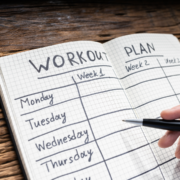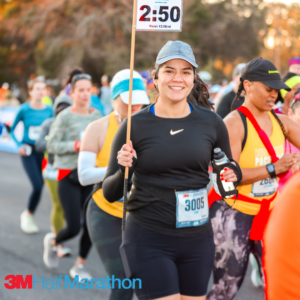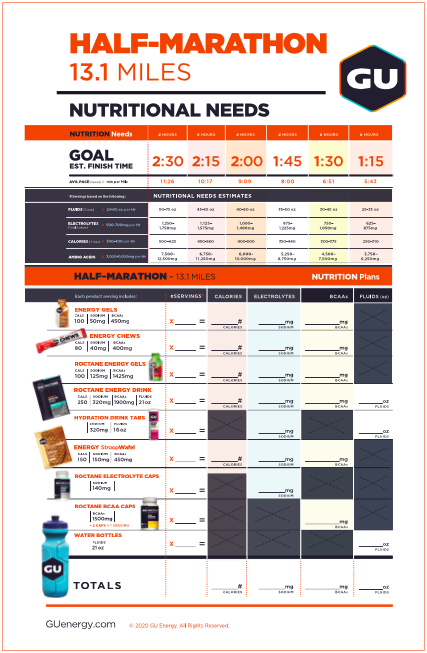Training for the 3M Half Marathon in Texas means preparing for a wide variety of weather conditions. Texas weather can be as unpredictable as a sprint finish, changing day-to-day. Here’s how to adapt your running regimen through the seasons, ensuring you’re ready for anything Mother Nature throws your way, especially when race day arrives in the heart of winter.
Spring: A Season of Unpredictability
 Spring in Texas presents unique challenges for runners, with its mix of sunny days, sudden showers, and fluctuating temperatures. Always check the local weather forecast before lacing up your running shoes to prepare for the day’s conditions.
Spring in Texas presents unique challenges for runners, with its mix of sunny days, sudden showers, and fluctuating temperatures. Always check the local weather forecast before lacing up your running shoes to prepare for the day’s conditions.
Dress Smartly in Layers: Given the often unpredictable temperatures, dressing in layers is crucial. Start with a moisture-wicking base layer to keep sweat at bay, add an insulating layer if it’s chilly, and always carry a light, waterproof jacket to shield yourself from unexpected rain showers.
Combat Allergies: The beauty of spring blooms often comes with the annoyance of allergies. To minimize exposure to high pollen counts, consider scheduling your runs for the late afternoon or just after a rain shower, when pollen levels are generally lower. Don’t forget to wear a hat to keep pollen out of your hair and sunglasses to protect your eyes.
Choose Your Trails Wisely: Post-rain conditions can make trails muddy and slippery, posing a challenge to footing and pace. Opt for paved paths or well-drained routes when possible and be extra cautious on natural trails to prevent slips and falls. And, after your run, remember to properly dry out your shoes to maintain their condition and extend their lifespan.
By adapting your running routine to address these springtime variables, you can enjoy a productive and enjoyable training season in Texas, preparing effectively for upcoming races like the 3M Half Marathon.
 Summer: The Heat Is On
Summer: The Heat Is On
Summer brings the heat, and in Texas, it means business. High temperatures and humidity can make training challenging, but with the right approach, you can keep your cool.
Hydration is Key: To combat the effects of high temperatures, it’s crucial to increase your water and electrolyte intake. For longer runs, carrying a hydration pack can ensure you have access to fluids at all times. Consider using electrolyte tablets or mixes to replenish vital salts and minerals lost through sweat.
Timing Your Runs: To avoid the worst of the heat, plan your runs during the cooler parts of the day. Early mornings, before the sun rises, or late evenings, after it sets, offer not only cooler temperatures but also less direct sunlight. For example, running at dawn might allow you to experience a more comfortable temperature of around 70°F, compared to midday highs that can soar above 95°F.
Sun Protection: Direct sun exposure can lead to sunburn and contribute to dehydration and heat exhaustion. Apply a broad-spectrum,
sweat-resistant sunscreen with at least SPF 30 before your run. Additionally, wear a lightweight, breathable hat and UV-protective sunglasses to shield your skin and eyes from harmful UV rays. Opting for light-colored, loose-fitting clothing can also help reflect the sun’s rays and aid in heat dissipation.
By focusing on hydration, choosing cooler times for your runs, and protecting yourself from the sun, you can safely and effectively continue your running training throughout the hot Texas summer.
Fall: Perfect Running Weather
Fall is loved by all in Austin, as the summer heat gives way to cooler temperatures. This time of year is particularly loved by the local running community for the cool, comfortable weather that’s ideal for ramping up training efforts.

- Enjoy the Cooler Temperatures: With daytime highs typically ranging from the mid-60s to low 80s (°F), fall provides the perfect climate for running. The cooler air is not only more comfortable but can also lead to improved performance and endurance. Take advantage of these conditions for longer distance runs or to increase your training intensity without the oppressive heat.
- Prepare for the Dark: As the days get shorter, chances are you’ll find yourself running in low-light conditions more often. Invest in reflective gear and proper lighting, such as headlamps or clip-on lights, to ensure you’re visible and safe during dusk or dawn runs.
- Focus on Race Preparation: The agreeable fall weather is an excellent opportunity to intensify your training regimen. Increase your mileage thoughtfully and begin integrating race pace runs into your schedule. This strategic approach will help you build up to the 3M Half Marathon, ensuring you’re in top form as race day approaches.
Embracing these fall conditions can make your preparation for the 3M Half Marathon not only more effective but also more enjoyable. So, lace up your shoes, and let the crisp fall air boost your spirits and your strides as you gear up for race day.
Winter: Race Day Approaches
Winter in Austin might bring chillier temperatures, but it doesn’t mean your training has to go into hibernation. In fact, the cooler conditions can be quite conducive to enhancing your running performance, offering a fresh perspective on your preparation for events like the 3M Half Marathon.
- Embrace the Cold: Austin winters are generally mild, with temperatures rarely dipping below freezing. Daytime highs often range from the mid-40s to mid-60s (°F), making it a refreshing time for runners who prefer cooler weather. This drop in temperature can help improve your running efficiency and make long runs less taxing compared to the heat and humidity of other seasons.
- Dress Appropriately: Layering is key to winter running success. Start with a moisture-wicking base layer to keep sweat at bay, add an insulating layer to retain body heat, and top it off with a wind-resistant and waterproof jacket for those windy or wet days. Don’t forget gloves and a hat to protect your extremities, which tend to get cold quickly.
 Get Ready to Taper: As the 3M Half Marathon approaches in January, begin to taper your training to ensure your body is rested and ready for race day. Reduce the volume of your running gradually and focus on maintaining fitness rather than building it. This is a crucial phase to enhance recovery and optimize performance for the big event.
Get Ready to Taper: As the 3M Half Marathon approaches in January, begin to taper your training to ensure your body is rested and ready for race day. Reduce the volume of your running gradually and focus on maintaining fitness rather than building it. This is a crucial phase to enhance recovery and optimize performance for the big event.
Winter’s cooler weather can be a boon for runners, offering the chance to push harder without the stress of heat and humidity. Use this to your advantage as you taper and prepare for race day.
As you navigate the varying seasons in Texas, each one offers unique advantages and challenges for your training routine. By adapting to the changing conditions—from the heat of summer to the mild chill of winter—you can optimize your preparation for the 3M Half Marathon. Remember, regardless of the season, flexibility is key. Texas weather can be as variable as your training runs—some days you feel unstoppable, others you need to adjust your pace and expectations.

 2. Gear Tips
2. Gear Tips 3. Interval Training Techniques
3. Interval Training Techniques 4. Listening to Your Body
4. Listening to Your Body 5. Mental Strategies
5. Mental Strategies



 Spring in Texas presents unique challenges for runners, with its mix of sunny days, sudden showers, and fluctuating temperatures. Always check the local weather forecast before lacing up your running shoes to prepare for the day’s conditions.
Spring in Texas presents unique challenges for runners, with its mix of sunny days, sudden showers, and fluctuating temperatures. Always check the local weather forecast before lacing up your running shoes to prepare for the day’s conditions. Summer: The Heat Is On
Summer: The Heat Is On

 Get Ready to Taper: As the 3M Half Marathon approaches in January, begin to taper your training to ensure your body is rested and ready for race day. Reduce the volume of your running gradually and focus on maintaining fitness rather than building it. This is a crucial phase to enhance recovery and optimize performance for the big event.
Get Ready to Taper: As the 3M Half Marathon approaches in January, begin to taper your training to ensure your body is rested and ready for race day. Reduce the volume of your running gradually and focus on maintaining fitness rather than building it. This is a crucial phase to enhance recovery and optimize performance for the big event. The Science of Carb-Loading
The Science of Carb-Loading